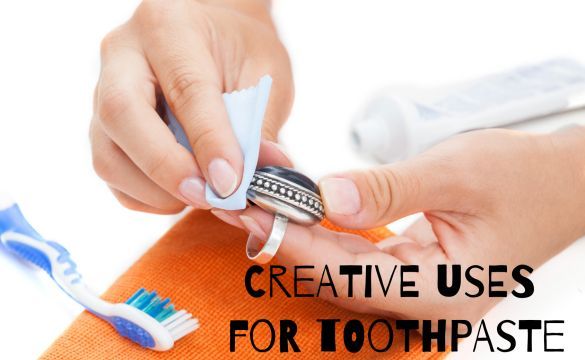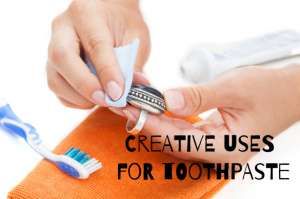
Most people purchase toothpaste without a second thought about the ingredients in it. Beyond the health claims on the outside of the box, most consumers don’t expect to need more information.
Unfortunately, toothpaste contains some seriously hazardous ingredients that can cause harm rather than helping.
What’s hiding in your toothpaste tube?
Sodium Fluoride
Dentists have great claims about the benefits of fluoride for your teeth. You have heard the boasts about stronger teeth and reduced tooth decay.
Fact: Sodium fluoride is found as a component of industrial pesticides and rat poisons. It is a by-product that is developed during the manufacture of aluminum. The Akron Regional Poison Center has said that a 100-pound adult can be killed by ingesting just one-tenth of an ounce.
Various studies have linked fluoride with a variety of health problems including the following:
· Disruption of collagen synthesis resulting in the disintegration of tendon, skin, lungs, bone, muscles, and more.
· Depletion of energy reserves and impeding the ability of white blood cells to defend the body against invading foreign agents.
· Confused immune system, causing the body to attack itself and boosting the growth of cancer tumors.
· Inhibition of thyroid activity.
· Promotes bone cancer development.
Triclosan
Triclosan is categorized by researchers as a suspected cause of cancer in humans. It is classified as a pesticide by the United States Environmental Protection Agency (EPA) that poses a threat to the environment and humans. Despite these facts, it is still found as a component in several toothpaste brands.
DEA
Diethanolamine or DEA is commonly found in foaming products. It is known to be a hormone disrupter and promotes the formation of cancer-related nitrates.
Propylene Glycol
Despite the fact that this is a primary ingredient in antifreeze, it also functions as a surfactant and wetting agent in the formulation of toothpaste. The EPA does not allow the chemical to be handled by its workers without using rubber gloves. Even so, it hasn’t stopped it from being used in toothpaste and other personal care products. The Material Safety Data Sheet for this chemical clearly states it can be quickly absorbed through the skin and lead to abnormalities in the kidneys, liver, and brain.
Sodium Lauryl Sulfate
This ingredient is often added as an ingredient in cleaning agents and detergents. It is known to cause skin irritations, eye damage, and difficulty breathing. This compound can linger in the body for five days building up in the brain, liver, lungs and heart.
13 ways to use up toothpaste without putting your health at risk
Now that you know about the hazards lurking in your toothpaste tube, you might like some solutions for using it up that don’t involve putting it in your mouth. Here are 13 creative ways to use up that toothpaste without risking your health.
1. Clean up carpet stains
· Squeeze out a portion of toothpaste on the stained area.
· Using a toothbrush or small scrubbing brush, scrub the paste into the carpeting with mild pressure.
· Rinse with clean, warm water.
· Repeat as necessary.
2. Polish up your silver
· Apply a small amount of white toothpaste (not the gel kind) to tarnished silver items like picture frames or serving dishes.
· Use a small brush or polishing cloth to work the paste across the metal.
· Rinse with warm, clean water.
· Use a towel to buff the item dry.
3. Remove clothing stains
· Apply a basic toothpaste (non-whitening) to clothing stains.
· Dab the fabric under water and rub vigorously to work the paste into the material.
· Toss into the washing machine and wash as usual.
4. Bathroom sinks
· Apply a little toothpaste on a small scrubbing brush.
· Scrub dirty areas with moderate pressure.
· Rinse with clean, warm water.
5. Polish your chrome
· Apply a small amount of white toothpaste to water spots and other marks on your chrome faucets.
· Use a cloth to rub it well.
· Rinse with clean water.
6. Remove water rings from coffee tables
· Apply some toothpaste to the ring using a gentle fiber cloth — use light pressure.
· Wipe the area dry with a moist cloth.
· Then apply a light touch up with olive oil or furniture polish.
 7. Fill in nail holes
7. Fill in nail holes
· Apply a dab of toothpaste to nail holes to fill them in as you would with a caulking agent.
· For walls that are not white, use food coloring or similar agent to color match.
· Leave to dry.
8. Clean up your car headlights
· Thoroughly clean off any dirt from your car headlights.
· Then apply a small amount of toothpaste and use a cloth to rub it in evenly.
· Use a moist cloth to finish polishing.
9. Shine up your shower door
· Using a damp sponge, rub a small amount of whitening toothpaste to the door.
· In a circular motion, rub the sponge over the entire surface.
· Rinse and dry in circular motions until clear.
10. Clean up tennis shoe scuffs
· Use a small brush to apply toothpaste to the scuffed bottoms of tennis shoes.
· Take a moist cloth and rub the scuff away with the paste.
11. Touch up the patio furniture
· Place some toothpaste on a damp cloth and work it over soiled areas on patio furniture.
· Rinse with clean water.
· Allow to dry in the sun.
12. Remove scuffs from leather items
· Use a soft cloth to apply toothpaste to scuffed areas on leather.
· Wipe off the toothpaste with a moist cloth.
· Allow to air dry.
13. Clean crayon off painted walls
· Use a small amount of toothpaste on a cloth to rub over the crayon area.
· Wipe it clean with a damp cloth.
· Allow to dry.
*Be sure to use on a small test area in case your paint is not able to tolerate mild abrasives.
What is your favorite creative way to use toothpaste?
-The Alternative Daily
Sources:
http://www.rd.com/home/16-unexpected-ways-to-use-toothpaste
http://consumerist.com/2010/11/18/34-uses-for-toothpaste-outside-of-your-mouth
http://www.today.com/home/household-uses-toothpaste-t19171
http://articles.mercola.com/sites/articles/archive/2014/08/27/triclosan-toothpaste.aspx
http://all-natural.com/fleffect.html
http://www.livestrong.com/article/167101-what-are-the-harmful-ingredients-in-toothpaste

